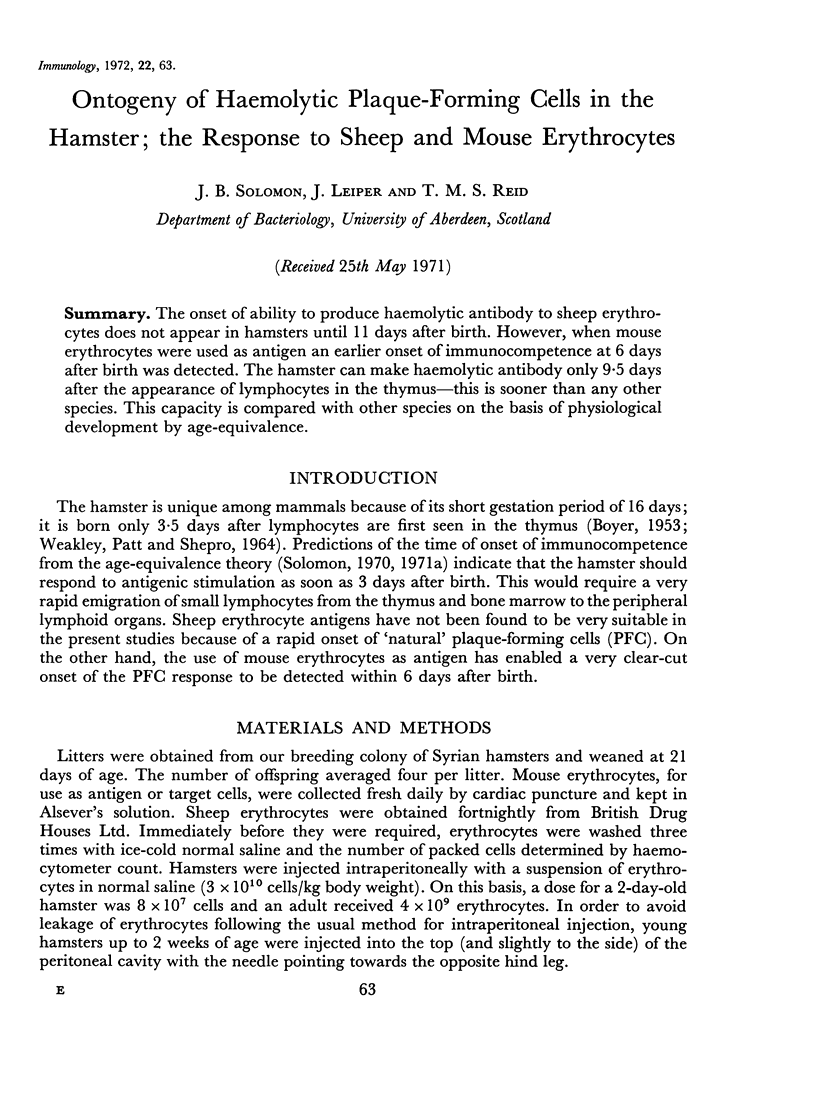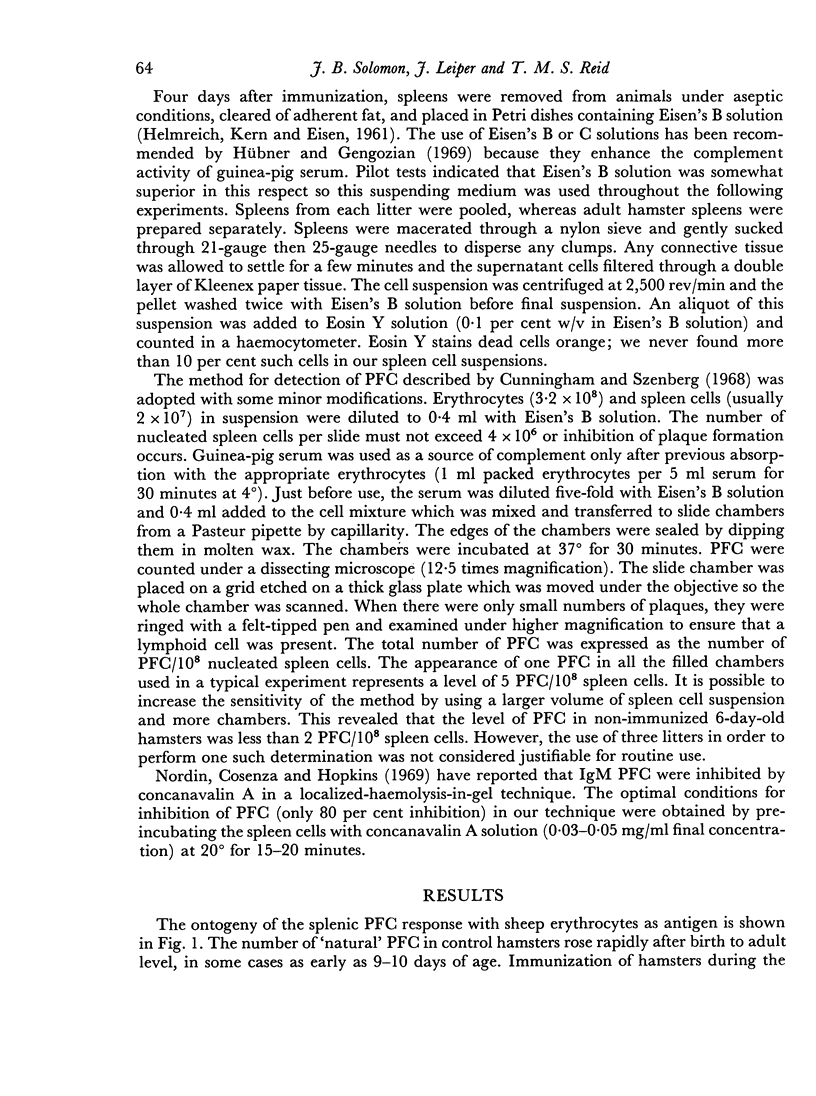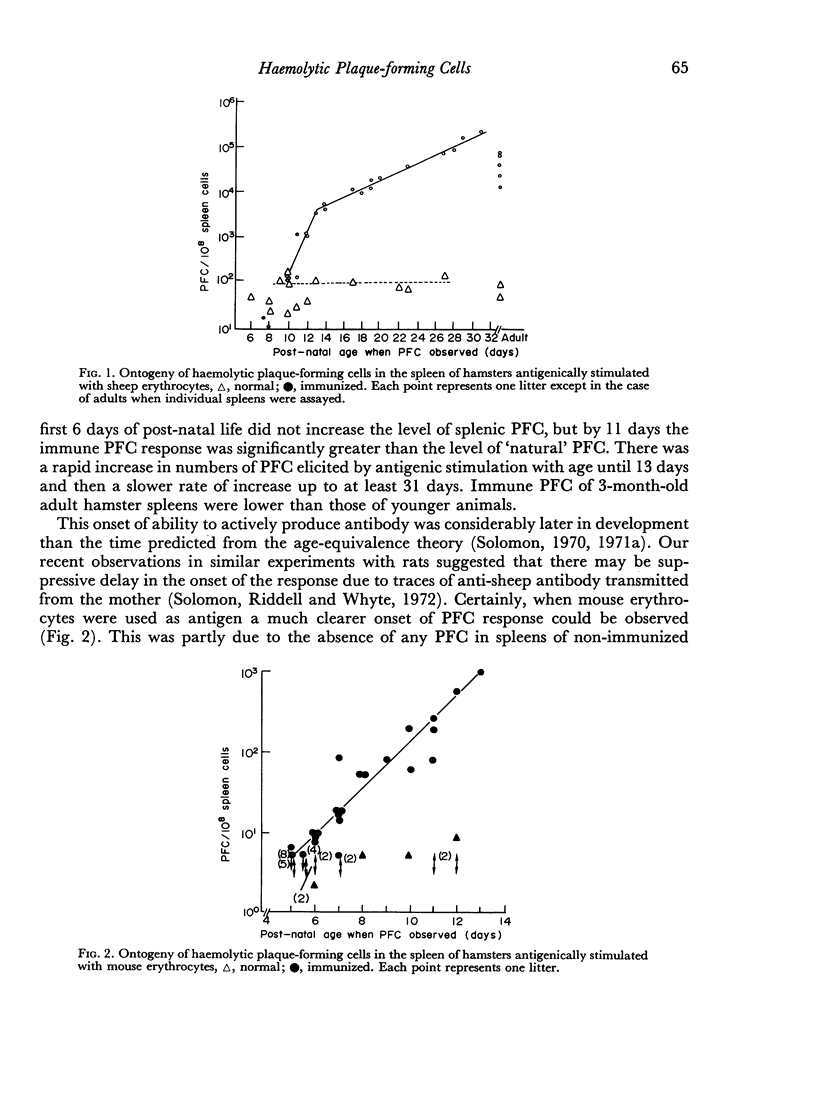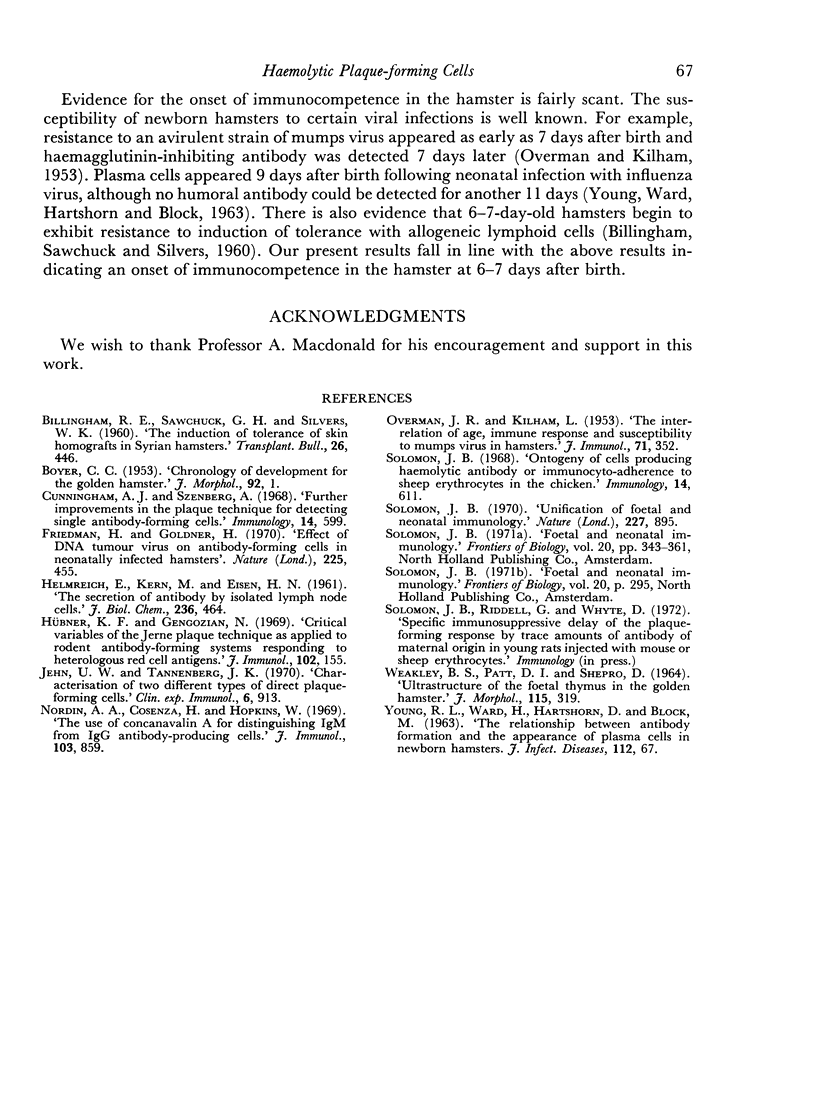Abstract
The onset of ability to produce haemolytic antibody to sheep erythrocytes does not appear in hamsters until 11 days after birth. However, when mouse erythrocytes were used as antigen an earlier onset of immunocompetence at 6 days after birth was detected. The hamster can make haemolytic antibody only 9.5 days after the appearance of lymphocytes in the thymus—this is sooner than any other species. This capacity is compared with other species on the basis of physiological development by age-equivalence.
Full text
PDF




Selected References
These references are in PubMed. This may not be the complete list of references from this article.
- Cunningham A. J., Szenberg A. Further improvements in the plaque technique for detecting single antibody-forming cells. Immunology. 1968 Apr;14(4):599–600. [PMC free article] [PubMed] [Google Scholar]
- Friedman H., Goldner H. Effect of a DNA tumour virus on antibody forming cells in neonatally infected hamsters. Nature. 1970 Jan 31;225(5231):455–456. doi: 10.1038/225455a0. [DOI] [PubMed] [Google Scholar]
- HELMREICH E., KERN M., EISEN H. N. The secretion of antibody by isolated lymph node cells. J Biol Chem. 1961 Feb;236:464–473. [PubMed] [Google Scholar]
- Hübner K. F., Gengozian N. Critical variables of the Jerne plaque technique as applied to rodent antibody-forming systems responding to heterologous red cell antigens. J Immunol. 1969 Jan;102(1):155–167. [PubMed] [Google Scholar]
- Jehn U. W., Tannenberg J. K. Characterization of two different types of direct plaque-forming cells. Clin Exp Immunol. 1970 Jun;6(6):913–918. [PMC free article] [PubMed] [Google Scholar]
- Nordin A. A., Cosenza H., Hopkins W. The use of concanavalin A for distinguishing IgM from IgG antibody-producing cells. J Immunol. 1969 Oct;103(4):859–861. [PubMed] [Google Scholar]
- OVERMAN J. R., KILHAM L. The interrelation of age. immune response, and susceptibility to mumps virus in hamsters. J Immunol. 1953 Nov;71(5):352–358. [PubMed] [Google Scholar]
- Solomon J. B. Ontogeny of cells producing haemolytic antibody or immunocyto-adherence to sheep erythrocytes in the chicken. Immunology. 1968 May;14(5):611–619. [PMC free article] [PubMed] [Google Scholar]
- Solomon J. B. Unification of foetal and neonatal immunology. Nature. 1970 Aug 29;227(5261):895–897. doi: 10.1038/227895a0. [DOI] [PubMed] [Google Scholar]
- WEAKLEY B. S., PATT D. I., SHEPRO D. ULTRASTRUCTURE OF THE FETAL THYMUS IN THE GOLDEN HAMSTER. J Morphol. 1964 Nov;115:319–354. doi: 10.1002/jmor.1051150303. [DOI] [PubMed] [Google Scholar]
- YOUNG R. L., WARD H., HARTSHORN D., BLOCK M. The relationship between antibody formation and the appearance of plasma cells in newborn hamsters. J Infect Dis. 1963 Jan-Feb;112:67–76. doi: 10.1093/infdis/112.1.67. [DOI] [PubMed] [Google Scholar]


